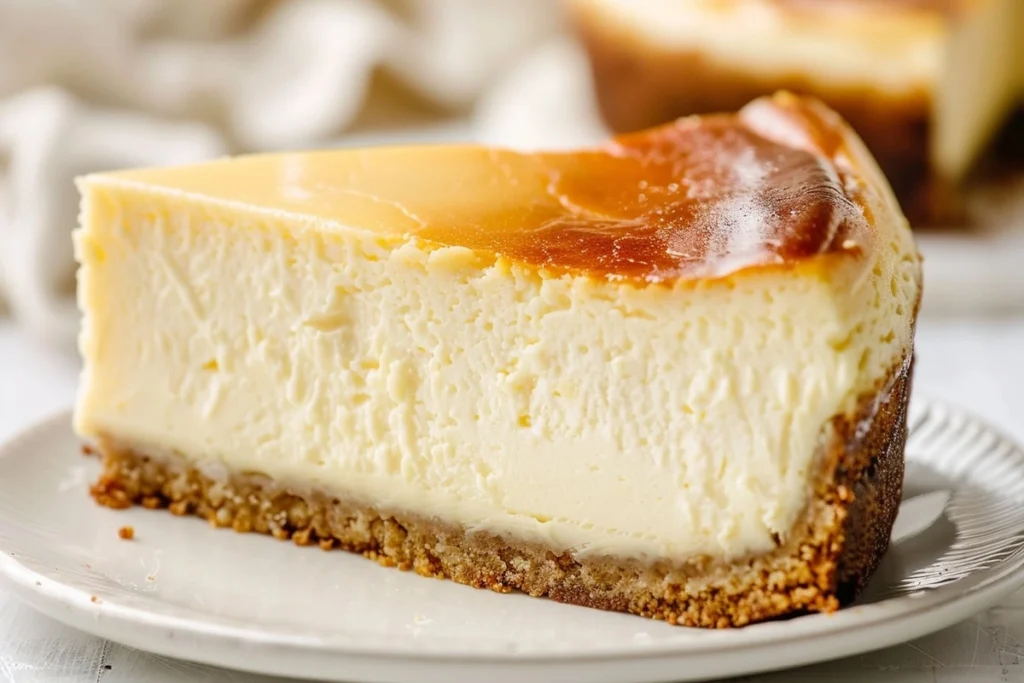
Introduction
The History of New York-Style Cheesecake
New York-style cheesecake is known for its rich, creamy texture and smooth consistency. This classic dessert traces its roots back to the early 20th century when New York City became a hub for fine dining and innovative desserts. The unique texture of New York cheesecake sets it apart from other varieties, thanks to its dense, velvety filling and a thick graham cracker crust. Unlike lighter cheesecakes, this style relies on heavy cream, eggs, and high-quality cream cheese to create a rich, indulgent bite.
The first modern New York cheesecake is often credited to Arnold Reuben, a restaurateur famous for his sandwiches and desserts. Over time, the dessert gained popularity and became a staple in bakeries and restaurants across the city, eventually spreading nationwide.
The Role of Philadelphia Cream Cheese
One of the key ingredients that make Philadelphia New York cheesecake so special is Philadelphia cream cheese. Known for its smooth texture and mild tanginess, this cream cheese brand has been a favorite among bakers for over a century. Unlike other styles of cheesecake that may use ricotta or mascarpone, New York-style cheesecake depends on Philadelphia cream cheese for its signature dense and creamy consistency.
Philadelphia cream cheese is prized for its high-quality ingredients and rich flavor, which help create the perfect cheesecake filling. Its velvety texture blends seamlessly with sugar, eggs, and vanilla extract, ensuring a smooth and luscious dessert every time. Whether baked traditionally or given a modern twist, this cheesecake remains an iconic treat loved by dessert enthusiasts worldwide.
Key Ingredients for the Perfect Cheesecake
Essential Ingredients for the Crust
A great cheesecake starts with a sturdy and flavorful crust. The most common choice is a graham cracker crust, which provides the perfect balance of crunch and sweetness. Here’s what you’ll need:
- Graham Crackers (1 ½ cups, crushed) – The classic base for a buttery and slightly sweet crust.
- Unsalted Butter (6 tablespoons, melted) – Helps bind the crust together and adds a rich flavor.
- Granulated Sugar (2 tablespoons) – Enhances sweetness and complements the tangy cheesecake filling.
- Salt (¼ teaspoon) – Balances flavors and prevents the crust from being overly sweet.
You can also experiment with alternatives like Oreo cookies, digestive biscuits, or even shortbread cookies for a unique twist!
The Creamy Cheesecake Filling
The heart of any great Philadelphia New York cheesecake is its smooth and velvety filling. The key to achieving that signature dense yet creamy texture lies in these essential ingredients:
- Philadelphia Cream Cheese (4 packages, 8 oz each) – The star of the cheesecake, providing a rich, creamy texture.
- Granulated Sugar (1 cup) – Sweetens the filling while maintaining its smooth consistency.
- Sour Cream (1 cup) – Adds a subtle tang and enhances the creaminess.
- Vanilla Extract (1 tablespoon) – Brings out the flavors and adds depth.
- Eggs (4 large) – Helps set the cheesecake, giving it structure and richness.
- Lemon Juice (1 tablespoon, optional) – Adds a slight tartness that balances the sweetness.
For an ultra-creamy cheesecake, always use full-fat cream cheese and room-temperature ingredients to ensure a silky-smooth batter.
Preparation Tips for a Flawless Cheesecake
Choosing the Right Ingredients
- Full-Fat Cream Cheese: Philadelphia cream cheese is the best choice for that signature rich texture. Avoid using low-fat versions, as they can affect the consistency.
- Fresh Eggs & Dairy: Room-temperature eggs and sour cream blend more smoothly into the batter, preventing lumps.
- Pure Vanilla Extract: Adds depth and warmth to the flavor profile—opt for real vanilla instead of artificial extracts.
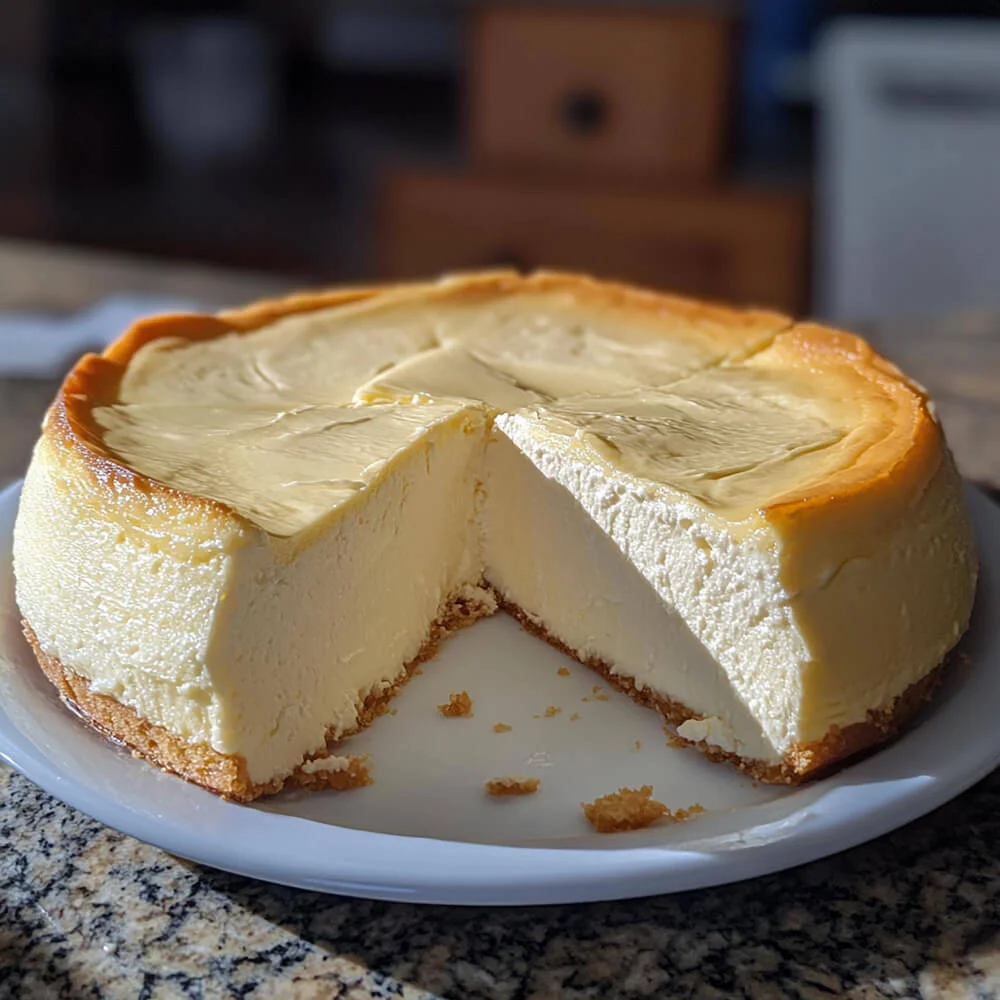
How to Prevent Cracks in Your Cheesecake
One of the biggest challenges when making cheesecake is avoiding cracks. Follow these tips for a perfectly smooth surface:
- Use a Water Bath – Baking your cheesecake in a water bath (bain-marie) helps regulate the temperature and prevents the top from drying out or cracking. Wrap your springform pan in foil and place it in a larger pan filled with hot water.
- Don’t Overmix the Batter – Overbeating incorporates too much air, which can cause the cheesecake to rise and collapse, leading to cracks. Mix just until the ingredients are combined.
- Bake at a Low Temperature – A gentle bake at 300–325°F (150–160°C) ensures even cooking and minimizes the risk of cracks.
- Cool Gradually – After baking, turn off the oven and let the cheesecake sit inside with the door slightly open for about an hour. This gradual cooling process prevents sudden temperature changes that can cause cracks.
- Chill Before Serving – Refrigerate your cheesecake for at least 4–6 hours (preferably overnight) for the best texture and flavor.
Step-by-Step Recipe for Philadelphia New York Cheesecake
Follow this simple step-by-step guide to create a rich, creamy, and indulgent Philadelphia New York Cheesecake right in your kitchen!
1: Gather Your Ingredients
Before you start, make sure you have all your ingredients at room temperature for the best texture.
For the Crust:
- 1 ½ cups graham cracker crumbs (about 12 crackers, crushed)
- 6 tablespoons unsalted butter, melted
- 2 tablespoons granulated sugar
- ¼ teaspoon salt
For the Cheesecake Filling:
- 4 (8 oz) packages Philadelphia cream cheese, softened
- 1 cup granulated sugar
- 1 cup sour cream
- 4 large eggs
- 1 tablespoon vanilla extract
- 1 tablespoon lemon juice (optional, for slight tartness)
2: Prepare the Graham Cracker Crust
- Preheat your oven to 325°F (160°C). Grease a 9-inch springform pan with butter or non-stick spray.
- In a mixing bowl, combine graham cracker crumbs, melted butter, sugar, and salt. Mix until the texture resembles wet sand.
- Press the mixture firmly into the bottom of the prepared pan, using the back of a spoon or the bottom of a glass.
- Bake for 10 minutes, then remove from the oven and let it cool while preparing the filling.
3: Make the Cheesecake Filling
- In a large bowl, beat Philadelphia cream cheese with an electric mixer on medium speed until smooth and creamy.
- Add sugar and mix until fully combined.
- Beat in sour cream, vanilla extract, and lemon juice (if using) until smooth.
- Add eggs, one at a time, mixing on low speed just until blended. Do not overmix to prevent air bubbles that can cause cracks.
4: Bake the Cheesecake
- Prepare a water bath (optional but recommended to prevent cracks). Wrap the outside of the springform pan with aluminum foil and place it in a large roasting pan. Fill the pan with hot water, about 1 inch deep.
- Pour the cheesecake filling over the cooled crust, spreading it evenly.
- Bake at 325°F (160°C) for 55–65 minutes, or until the center is slightly jiggly but set around the edges.
- Turn off the oven, crack the oven door open, and let the cheesecake cool inside for 1 hour.
5: Cool and Chill Before Serving
- Remove the cheesecake from the oven and water bath. Let it cool at room temperature for another 30 minutes.
- Cover and refrigerate for at least 4–6 hours, preferably overnight, for the best texture.
- Before serving, carefully run a knife around the edge of the cheesecake to loosen it from the pan. Remove the springform pan sides and slice into creamy, delicious pieces.
Baking Tips for a Perfect Cheesecake
The Importance of a Water Bath
A water bath (bain-marie) is a game-changer for baking a smooth, crack-free cheesecake. It creates a gentle, humid environment that helps the cheesecake bake evenly and prevents the top from drying out or cracking.
How to Set Up a Water Bath:
- Wrap the outside of your springform pan tightly with aluminum foil to prevent water from seeping in.
- Place the pan inside a larger roasting pan.
- Fill the roasting pan with hot water, about 1 inch deep.
- Bake as directed, allowing the cheesecake to bake slowly and evenly.
How to Achieve the Perfect Texture
To get that smooth, creamy, and dense cheesecake texture, follow these key tips:
Use Room-Temperature Ingredients – This ensures everything blends smoothly without lumps.
Mix on Low Speed – Overmixing incorporates too much air, which can cause the cheesecake to rise and crack as it cools.
Bake at a Low Temperature – Baking at 300–325°F (150–160°C) prevents overcooking and keeps the texture rich and creamy.
Don’t Overbake – The center should still have a slight jiggle when you gently shake the pan. It will set fully as it cools.
Cool Gradually – After baking, turn off the oven and leave the cheesecake inside with the door slightly open for one hour to prevent sudden temperature changes.
Variations and Toppings
Classic Cheesecake Toppings
Enhance your Philadelphia New York Cheesecake with one of these delicious toppings:
Fresh Berries – Top with strawberries, blueberries, or raspberries for a fresh, tangy contrast.
Caramel Drizzle – A rich, buttery caramel sauce adds sweetness and depth.
Chocolate Ganache – Melted chocolate with heavy cream creates a luscious topping.
Nutty Crunch – Sprinkle chopped pecans, almonds, or hazelnuts for extra texture.
Lemon or Berry Compote – A homemade fruit sauce adds a burst of flavor.
Whipped Cream – A light, airy touch balances the rich cheesecake.
Fun Flavor Variations
Take your cheesecake to the next level with creative flavor twists:
- Chocolate Swirl Cheesecake – Add melted chocolate to part of the batter and swirl it in before baking.
- Lemon Cheesecake – Mix in lemon zest and juice for a bright, citrusy flavor.
- Pumpkin Spice Cheesecake – Blend in pumpkin puree and warm spices for a fall-inspired treat.
- Cookies and Cream Cheesecake – Fold in crushed Oreo cookies for a cookies-and-cream twist.
- Peanut Butter Cheesecake – Swirl in creamy peanut butter for a nutty, rich variation.
Common Mistakes to Avoid
Even experienced bakers can run into issues when making cheesecake. Avoid these common mistakes to ensure your Philadelphia New York Cheesecake turns out perfectly every time!
Overbaking and Underbaking
One of the biggest mistakes is baking the cheesecake for too long or not long enough.
Signs of Overbaking:
- The cheesecake is dry, dense, or has a cracked surface.
- The edges are pulling away from the pan and turning brown.
How to Avoid It:
Bake at a low temperature (300–325°F / 150–160°C) for even cooking.
The center should still jiggle slightly when you gently shake the pan—it will firm up as it cools.
Let the cheesecake cool gradually in the oven for 1 hour with the door slightly open.
Signs of Underbaking:
- The center is too soft or liquidy even after cooling.
- The cheesecake collapses after being removed from the oven.
How to Avoid It:
Use a water bath to help the cheesecake bake evenly.
Check for doneness by gently shaking the pan—the edges should be firm while the center should have a slight wobble.
Bake for the recommended 55–65 minutes, and don’t rush the chilling process.
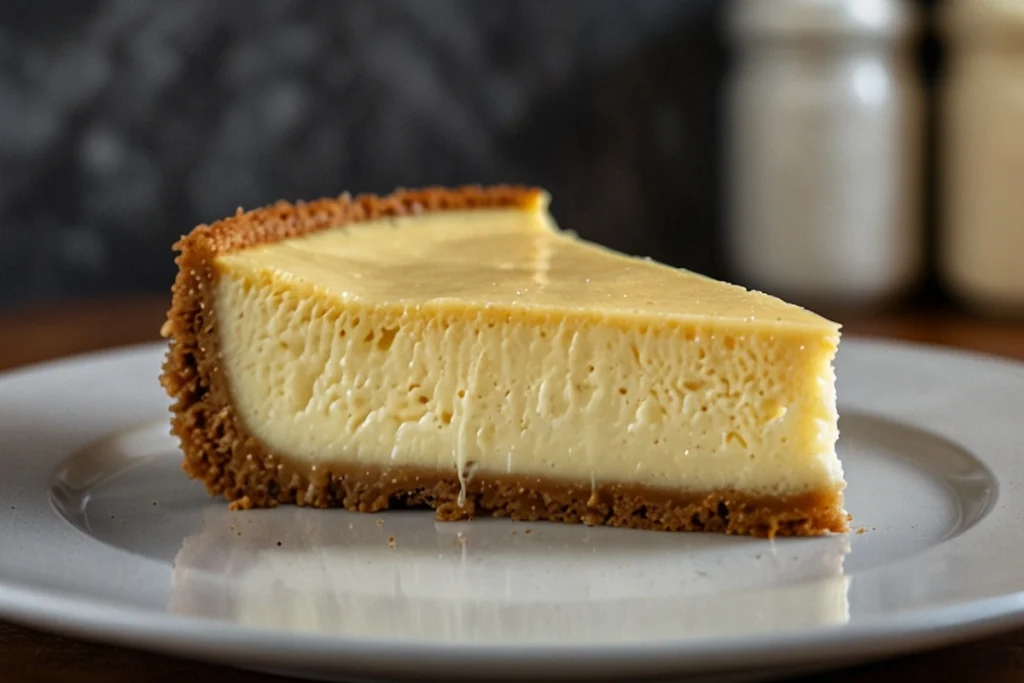
Preventing a Soggy Crust
A soggy crust can ruin an otherwise perfect cheesecake, but it’s easy to prevent with a few simple steps.
Common Causes:
- The graham cracker crust is not pre-baked, making it absorb moisture from the filling.
- Water from the water bath leaks into the springform pan.
How to Avoid It:
Pre-bake the crust at 325°F (160°C) for 10 minutes before adding the filling. This helps it set and stay crisp.
Wrap the springform pan tightly with two to three layers of aluminum foil before placing it in a water bath to prevent leaks.
Instead of placing the cheesecake in a water bath, place a separate oven-safe dish of hot water on the lower rack to create steam without the risk of leakage.
Frequently Asked Questions
Can I Use Low-Fat Cream Cheese?
While you can use low-fat cream cheese, it’s not recommended for a classic Philadelphia New York Cheesecake. Full-fat cream cheese is essential for achieving the rich, creamy, and dense texture that defines this dessert. Low-fat versions may result in a softer, less flavorful cheesecake. If you’re looking for a lighter alternative, consider reducing sugar or using Greek yogurt in place of sour cream.
How Do I Store Leftovers?
To keep your cheesecake fresh and delicious:
Refrigerator: Cover the cheesecake tightly with plastic wrap or store slices in an airtight container. It will stay fresh for 4–5 days in the fridge.
Freezer: Wrap individual slices in plastic wrap, then place them in a freezer-safe container or bag. Cheesecake can be frozen for up to 3 months. To serve, thaw slices overnight in the fridge.
Can I Make This Cheesecake Without a Water Bath?
Yes, but a water bath helps prevent cracks and ensures an evenly baked cheesecake. If you prefer to skip the water bath:
Bake at a lower temperature (around 300°F / 150°C) for a longer time to reduce the risk of cracking.
Place a pan of hot water on the lower rack to create steam without direct contact.
Don’t overmix the batter, as excess air can cause the cheesecake to rise and crack.
How Do I Make a Gluten-Free Version?
Making a gluten-free Philadelphia New York Cheesecake is easy!
Crust Alternative: Swap graham crackers for gluten-free graham crackers, almond flour crust, or crushed gluten-free cookies.
Check Your Ingredients: Ensure vanilla extract, cornstarch (if used), and any toppings are gluten-free.
Follow the Same Baking Process – No other changes are needed!
Conclusion
Making a Philadelphia New York Cheesecake at home is easier than you think and guarantees a rich, creamy, and indulgent dessert every time. By using high-quality Philadelphia cream cheese, fresh ingredients, and simple baking techniques, you can create a bakery-quality cheesecake right in your own kitchen. Whether you’re making it for a special occasion, a family gathering, or simply to satisfy a dessert craving, this cheesecake is sure to impress!
Philadelphia New York Cheesecake is the epitome of rich, creamy indulgence, featuring a dense yet velvety texture thanks to the use of high-quality Philadelphia cream cheese. This classic dessert is beloved for its smooth consistency and perfectly balanced sweetness, making it a standout choice for any occasion. Whether you enjoy it plain or topped with fruit, caramel, or chocolate, this cheesecake is a guaranteed crowd-pleaser. For more delicious cheesecake variations, check out Cinnamon Roll Cheesecake for a fun twist on this iconic dessert!
Viral Tuna Salad: 5 Bold Reasons Matthew McConaughey’s Recipe Wins
Healthy Homemade Chicken Mortadella
Chicken Mortadella changed my deli game forever. I used to stare at processed meat…
The BEST Taco Pasta
When I’m short on time and need to get a satisfying dinner on…
Classic German Kartoffelpuffer Recipe (Authentic, Crispy & Easy to Make)
Easy Butter Pecan Cookies Recipe
There’s something undeniably comforting about the scent of buttery, nutty cookies wafting from…
Perfect Strawberry Cheesecake Recipe
If there’s one dessert that’s guaranteed to silence a lively room, it’s this…


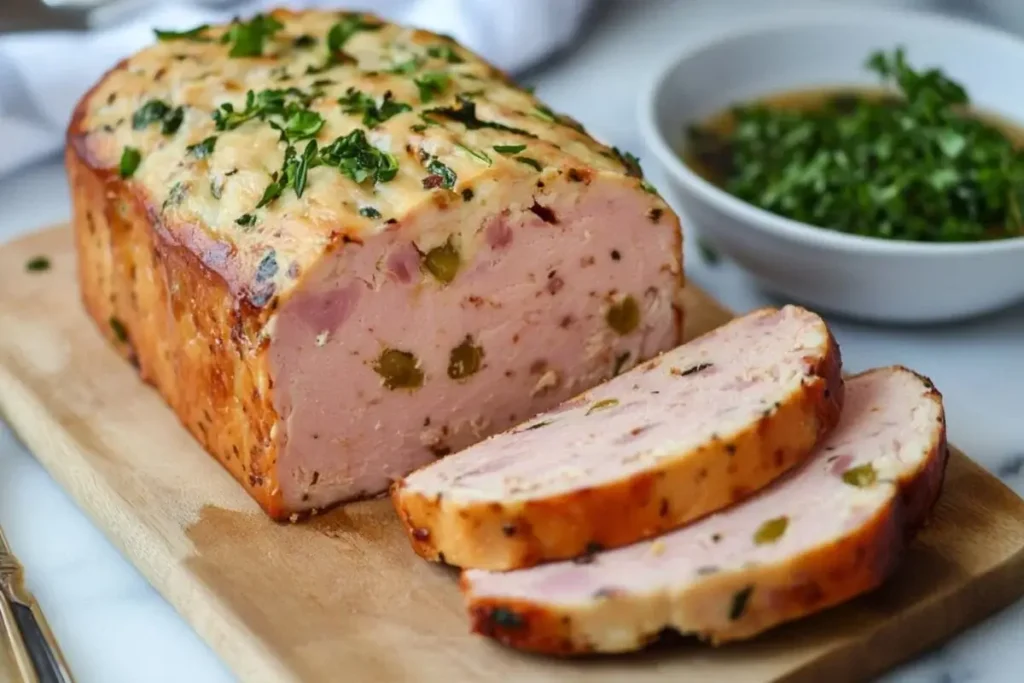

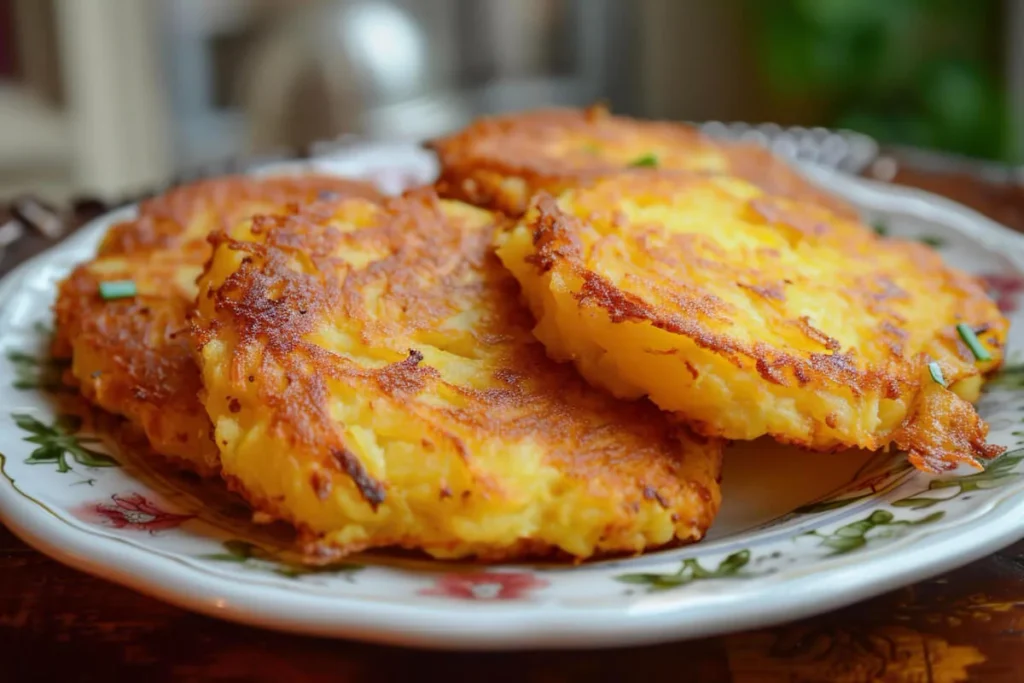

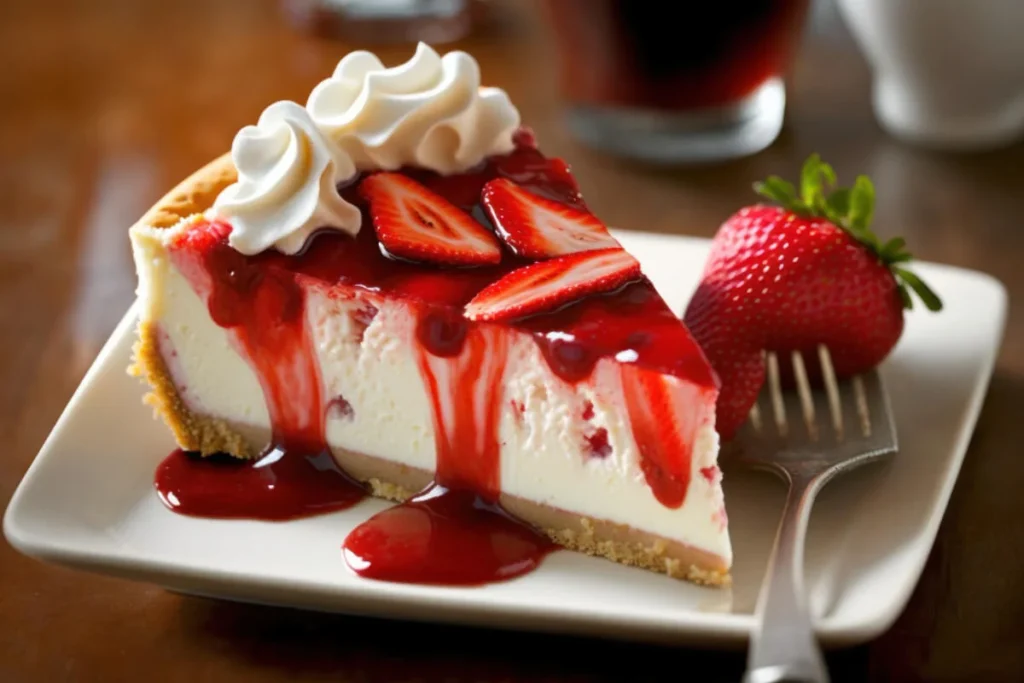
1 thought on “Philadelphia New York Cheesecake”